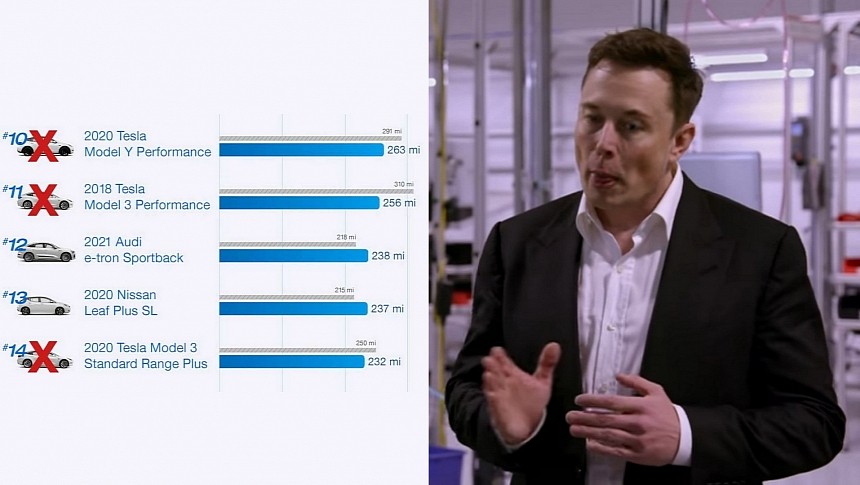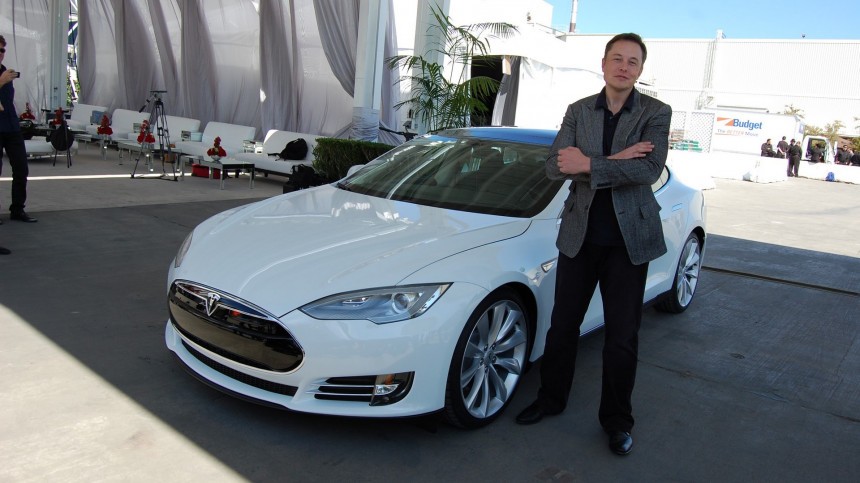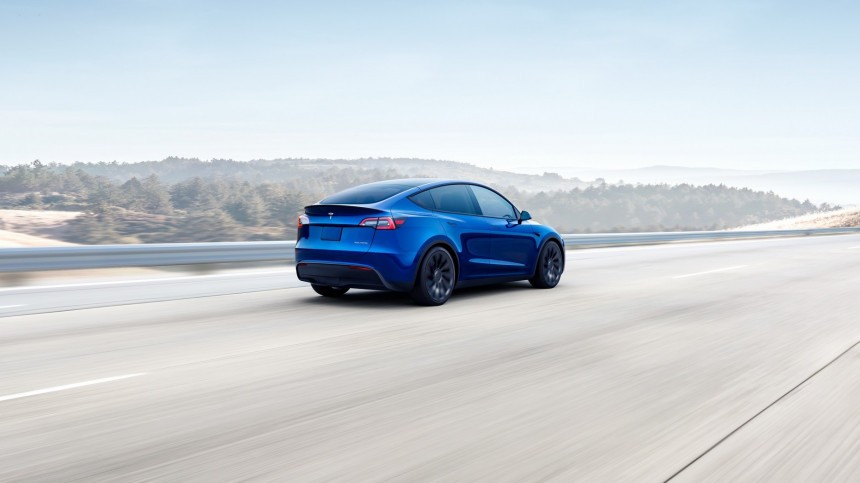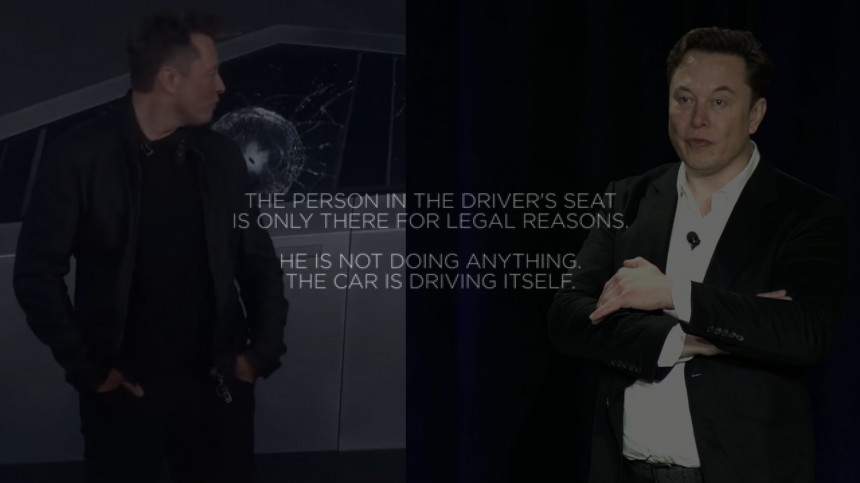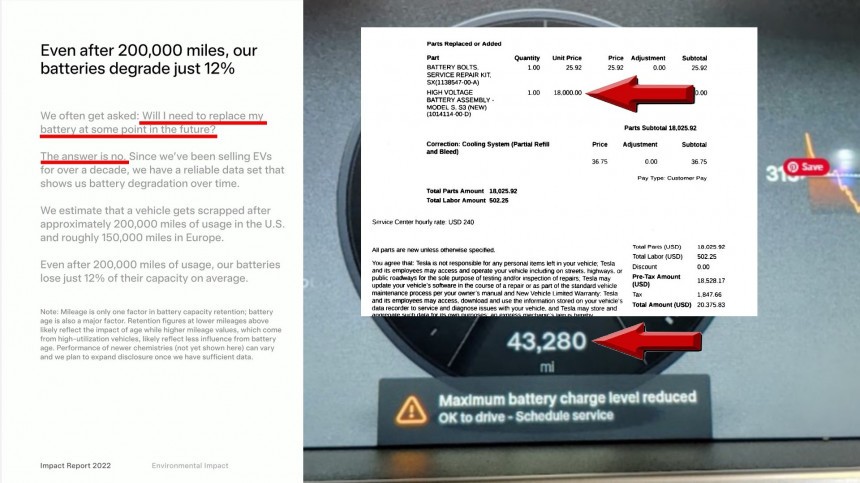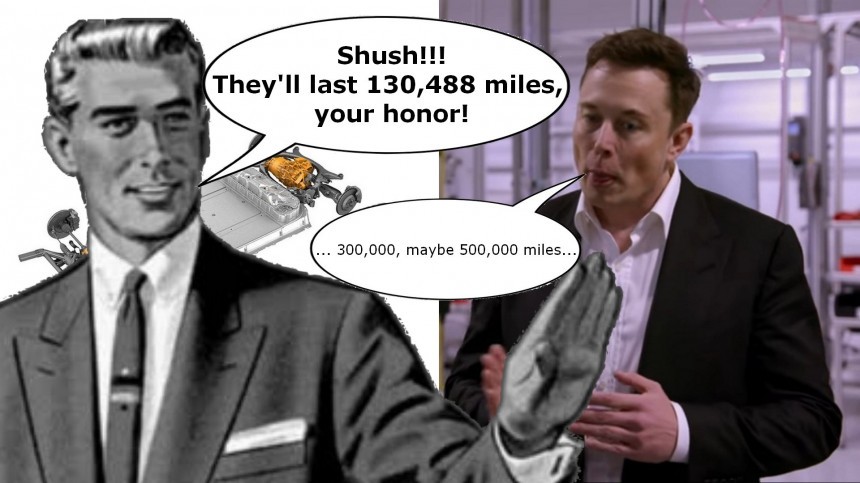Early Model 3 owners answered a Bloomberg survey in 2019 and again in 2023. The main difference Bloomberg noticed was the perception people had about Elon Musk. Among the spontaneous comments on the Tesla CEO in the latest survey, one caught my attention. The respondent said we would not have electric cars today if it were not for Musk. That's a common misconception, but let's suppose it was correct. Learning how Musk did it, is it a good thing at all?
Before anything else, it is crucial to clarify why that is wrong. AC Propulsion already existed before the 2008 Tesla Roadster proved modern battery electric vehicles were possible. Martin Eberhard and Marc Tarpenning conceived it. They came up with the idea of showing battery electric vehicles (BEVs) could be desirable by building a sports car, which made them contact Lotus in 2002.
These two engineers incorporated the company on July 1, 2003. Musk joined later and was an early investor, as much as he tries to deny that and present himself as a Tesla founder. Although the company has just turned 20 years old, you did not hear any celebration because that would imply acknowledging the truth: Musk did not create Tesla or its first car.
In 2010, Nissan presented the LEAF, the first mass-production BEV. The Model S was the first to count on a trustworthy fast-charging network and a decent range, which explains why people wanted to buy it. Although Musk may be involved with the Model S and the Supercharging network, the movement had started without him and would probably continue to develop without his interference. At best, he helped speed things up, which is not necessarily good when you look at the bigger picture. As I warned in a previous text, Musk helped to consolidate the current BEV model, which relies on heavy battery packs that need to fast charge to be remotely comparable to the convenience of internal combustion engine cars. And the Tesla CEO did that by saying things his customers later learned they could not trust.
The latest of these nudges about this path came from Reuters. It discovered that Musk ordered software developers to always present Tesla drivers with the best range their cars could have in the best conditions. That started with the Model S. The issue is that these BEVs often drove in bad scenarios, such as cold weather. It would be easy for Tesla to present realistic ranges, but the CEO determined they should do otherwise. Reuters framed the ranges they disclosed as "rosy," but those who ever got stranded with their Tesla BEVs probably see that euphemism in much worse terms. Unreal would be a better and more neutral term to classify what Musk asked Tesla software engineers to do.
The rigged numbers even made some gullible Tesla advocates mock companies that sold BEVs with worse EPA numbers. Real-life testing showed they often performed better than the vehicles sold by Tesla. Some of these advocates still use this flawed argument of an imaginary range superiority that only exists in their minds and on Tesla's and the Environmental Protection Agency's (EPA's) websites.
To make matters worse, Tesla uses an optional five-cycle testing procedure to achieve its EPA range numbers that no one manages to reproduce. Edmunds sounded the alarm in February 2021. EPA itself conducted audits and ordered the BEV maker to lower its numbers by around 3%. Unfortunately, Reuters did not disclose when these audits were performed, but my impression is that they are recent. The 2021 Model Y Long Range AWD alone had to reduce its official range by 5.15%. What good is that two years later, when the 2021 Model Y is already a used car? Hopefully, EPA checked the range right after Edmund's alert, but I'd have to contact the agency to learn about that. Reuters had to use the Freedom of Information Act (FOIA) to obtain the information, so it may not be easy. It makes EPA look even worse than it already does by allowing two different range test standards and expecting the comparison of the numbers obtained in both processes to be fair.
Although this is a meaningful discussion, the deal here is that even the official EPA Tesla ranges are debatable, and customers already fail to achieve it. On top of that, the BEV maker received carbon credits based on these range numbers. Were they accurate enough for Tesla to make money based on them? We'll probably never know.
With the predictable complaints these "rosy" range numbers would provoke, Tesla created a team to cancel service appointments when they were based on range concerns. In other words, the company gave customers unreal range estimates, both with its EPA numbers and the dashboard estimates; when they complained about them, it put an entire team of remote technicians to dismiss these complaints. The "Diversion Team" had productivity targets: 750 cancelations per week, a number they easily beat when they reached more than 2,000 weekly withdrawals. Each "success" was celebrated by hitting a metallophone.
At first, only cases in which the vehicle clearly did not have any battery pack issue were diverted. As time went by, the technicians tried to convince Tesla owners to give up on their appointments without even verifying remotely if anything was wrong with the cars. As much as Tesla advocates are trying to downplay the situation, it would be a major scandal if it came from any legacy automaker. Sadly, it was not the first situation in which Musk knowingly gave customers unreal expectations to make his company stand out from the competition.
Last January, Ashok Elluswamy said under oath that the Tesla CEO dictated the disclaimer on a 2016 Autopilot video that read: "The person in the driver's seat is only there for legal reasons. He is not doing anything. The car is driving itself." According to the now Autopilot director, Musk also said the video had to "feel like one continuous take." It did, but it wasn't: the Model X even crashed, but that was not presented in the footage. The car also did not drive itself: the engineer behind the steering wheel had to intervene several times.
Musk has been saying since that year that autonomous vehicles are "basically a solved problem." He even promised 1 million robotaxis on the streets by 2020 and that Tesla's cars would turn into appreciating assets. Not for Tesla: it has reduced new BEV prices and made used car values tumble. Although the company charges $15,000 for Full Self-Diving, the software does not add a dime to the vehicle's price in a trade-in with Tesla.
Another pillar of BEV construction laid down by Musk was stating battery packs would last as much as the vehicle and that they could travel long distances with fast charging. On Tesla Autonomy Day on April 22, 2019, he said that "the current battery pack is about maybe 300,000 to 500,000 miles." The issue is that fast charging hurts these components, which already kick the bucket much earlier than they were supposed to die. Ask Bob Atkins' mother-in-law about that.
She bought a brand-new 2014 Model S 85 and drove it for less than 45,000 miles before it introduced her to the BMS_u029 error code. This message warns the drivers the battery pack needs to be replaced. A new one will cost $18,000, for a total bill of $20,000 – including service and taxes. According to Kelley Blue Book, her car is now worth around $25,000. What can we infer from that? That only vehicles made after 2019 have battery packs that last "300,000 to 500,000 miles?"
If that were the case, Tesla's German lawyers would not have to contradict Musk and state in court that the company's BEVs last only 210,000 kilometers (130,488 miles). That happened with cars delivered in 2019 and later, as Christoph Lindner revealed. Considering what happened to Bob Atkins' mother-in-law, Tesla should also state its battery packs do not last more than nine years – even if some may do. The deal is that batteries also die of old age, and nobody selling BEVs dares to mention that.
Again, if Musk put electric cars back on the map of customer options after the early 1900s attempts, he did so by claiming they had a range they didn't, a lifespan they failed to prove, and proposing a method for road trips that lowers their lifespans even more. He also promised they would be much safer than other vehicles because they would drive themselves, an idea that has already killed several people who blindly wanted to believe it – and some who had nothing to do with that. If that does not sound sustainable, that's because it genuinely isn't.
As I once wrote, Tesla and Elon Musk may be harming clean transportation instead of helping the industry achieve that goal. Experienced carmakers cannot profit from BEVs, which will weaken the automotive sector if that solution is the only one available. Tesla's profit numbers also do not make sense. Yet, some people still think the path the company established is the right one to follow.
Is it OK to overpromise and underdeliver if that helps "the mission?" Is it acceptable to sell cars that will "save the world" but fail to deliver the range they promise, "drive themselves" until someone dies (then it is the human's fault), and will last 300,000 miles to 500,000 miles but fail with only 43,000 miles? What will happen when people feel fooled by expectations with BEVs that never materialize, especially when the people presenting them knew they were unreal? Fool me once, shame on you. Fool me twice, three times, four times… shame on me.
These two engineers incorporated the company on July 1, 2003. Musk joined later and was an early investor, as much as he tries to deny that and present himself as a Tesla founder. Although the company has just turned 20 years old, you did not hear any celebration because that would imply acknowledging the truth: Musk did not create Tesla or its first car.
In 2010, Nissan presented the LEAF, the first mass-production BEV. The Model S was the first to count on a trustworthy fast-charging network and a decent range, which explains why people wanted to buy it. Although Musk may be involved with the Model S and the Supercharging network, the movement had started without him and would probably continue to develop without his interference. At best, he helped speed things up, which is not necessarily good when you look at the bigger picture. As I warned in a previous text, Musk helped to consolidate the current BEV model, which relies on heavy battery packs that need to fast charge to be remotely comparable to the convenience of internal combustion engine cars. And the Tesla CEO did that by saying things his customers later learned they could not trust.
The rigged numbers even made some gullible Tesla advocates mock companies that sold BEVs with worse EPA numbers. Real-life testing showed they often performed better than the vehicles sold by Tesla. Some of these advocates still use this flawed argument of an imaginary range superiority that only exists in their minds and on Tesla's and the Environmental Protection Agency's (EPA's) websites.
To make matters worse, Tesla uses an optional five-cycle testing procedure to achieve its EPA range numbers that no one manages to reproduce. Edmunds sounded the alarm in February 2021. EPA itself conducted audits and ordered the BEV maker to lower its numbers by around 3%. Unfortunately, Reuters did not disclose when these audits were performed, but my impression is that they are recent. The 2021 Model Y Long Range AWD alone had to reduce its official range by 5.15%. What good is that two years later, when the 2021 Model Y is already a used car? Hopefully, EPA checked the range right after Edmund's alert, but I'd have to contact the agency to learn about that. Reuters had to use the Freedom of Information Act (FOIA) to obtain the information, so it may not be easy. It makes EPA look even worse than it already does by allowing two different range test standards and expecting the comparison of the numbers obtained in both processes to be fair.
With the predictable complaints these "rosy" range numbers would provoke, Tesla created a team to cancel service appointments when they were based on range concerns. In other words, the company gave customers unreal range estimates, both with its EPA numbers and the dashboard estimates; when they complained about them, it put an entire team of remote technicians to dismiss these complaints. The "Diversion Team" had productivity targets: 750 cancelations per week, a number they easily beat when they reached more than 2,000 weekly withdrawals. Each "success" was celebrated by hitting a metallophone.
At first, only cases in which the vehicle clearly did not have any battery pack issue were diverted. As time went by, the technicians tried to convince Tesla owners to give up on their appointments without even verifying remotely if anything was wrong with the cars. As much as Tesla advocates are trying to downplay the situation, it would be a major scandal if it came from any legacy automaker. Sadly, it was not the first situation in which Musk knowingly gave customers unreal expectations to make his company stand out from the competition.
Musk has been saying since that year that autonomous vehicles are "basically a solved problem." He even promised 1 million robotaxis on the streets by 2020 and that Tesla's cars would turn into appreciating assets. Not for Tesla: it has reduced new BEV prices and made used car values tumble. Although the company charges $15,000 for Full Self-Diving, the software does not add a dime to the vehicle's price in a trade-in with Tesla.
Another pillar of BEV construction laid down by Musk was stating battery packs would last as much as the vehicle and that they could travel long distances with fast charging. On Tesla Autonomy Day on April 22, 2019, he said that "the current battery pack is about maybe 300,000 to 500,000 miles." The issue is that fast charging hurts these components, which already kick the bucket much earlier than they were supposed to die. Ask Bob Atkins' mother-in-law about that.
If that were the case, Tesla's German lawyers would not have to contradict Musk and state in court that the company's BEVs last only 210,000 kilometers (130,488 miles). That happened with cars delivered in 2019 and later, as Christoph Lindner revealed. Considering what happened to Bob Atkins' mother-in-law, Tesla should also state its battery packs do not last more than nine years – even if some may do. The deal is that batteries also die of old age, and nobody selling BEVs dares to mention that.
Again, if Musk put electric cars back on the map of customer options after the early 1900s attempts, he did so by claiming they had a range they didn't, a lifespan they failed to prove, and proposing a method for road trips that lowers their lifespans even more. He also promised they would be much safer than other vehicles because they would drive themselves, an idea that has already killed several people who blindly wanted to believe it – and some who had nothing to do with that. If that does not sound sustainable, that's because it genuinely isn't.
Is it OK to overpromise and underdeliver if that helps "the mission?" Is it acceptable to sell cars that will "save the world" but fail to deliver the range they promise, "drive themselves" until someone dies (then it is the human's fault), and will last 300,000 miles to 500,000 miles but fail with only 43,000 miles? What will happen when people feel fooled by expectations with BEVs that never materialize, especially when the people presenting them knew they were unreal? Fool me once, shame on you. Fool me twice, three times, four times… shame on me.
